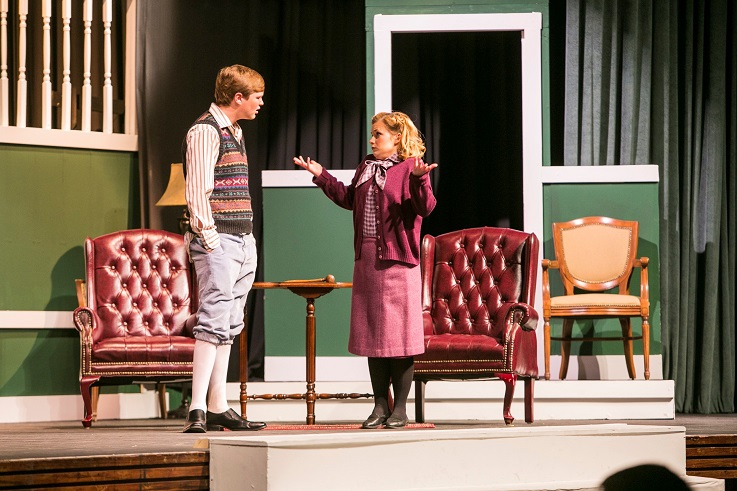Creative paths for Deaf, hard of hearing, and ASL interpreting majors: Deaf-led theatre

Paula Garfield spent 15 years as an actress, and for most of that time she was the only Deaf professional she knew working within a “mainstream” theatre company. Garfield became increasingly frustrated with the barriers that Deaf actors and directors face in the arts, and even more so, the lack of theatre created by Deaf artists or with Deaf audiences in mind.
“Despite having a Deaf actor using sign language, the shows weren’t made accessible to Deaf audiences — Deaf friends who came to see me perform would always say how lovely it was to see me on stage but, not able to understand the hearing actors, they weren’t able to enjoy the production fully,” explained Garfield in an interview with Independent.
After experiencing a lack of Deaf awareness and bullying from others in the industry, at age 35, Garfield was ready to put a halt to her acting career completely when a friend encouraged her to apply for funding from the Arts Council in England to start her own Deaf-led theatre company. And from there Deafinitely Theatre was born — the UK’s first ever Deaf-led theatre company.
Fifteen years later, Deafinitely Theatre is still thriving, expanding Deaf awareness and increasing opportunities for Deaf people and BSL (British Sign Language) users in all areas of theatre production. “Our work has represented the richness and diversity of Deaf culture, and reinterpreted established ‘mainstream’ works from a Deaf perspective,” says Garfield.
Running a Deaf-led theatre company does not come without its challenges however. “I don’t have the privilege that hearing directors have of selecting from a wide range of actors,” Garfield explains. “I cannot just cast anyone – they have to have the skills to carry the story. Also, we have to think about how accessible the play is for a hearing audience, something I have to consider throughout rehearsals.”
While mainstream theatre companies can rehearse as normal and then add an interpreter on stage near the end of the process, Garfield must work twice as hard when considering accessibility for hearing audiences.
Some companies in the surrounding area seek to make their productions more accessible to Deaf and hard of hearing people, such as Act Two Theatre in St. Peters, Missouri that puts on special events called Deaf Night at the Theatre, where interpreters are available at the box office, concession stands, usher stations and up on stage interpreting the performance itself. However, while this shift towards accessibility is moving in the right direction, there are still very few Deaf-led theatre companies in the U.S. and around the world.
The National Theatre of the Deaf (NTD) is one of the few, and it is also the first American professional Deaf theatre group, founded in 1967. The group has made tremendous strides for Deaf theatre over the past 50 plus years, winning a Tony Award and touring the country and the world. You can see a list of NTD’s ongoing productions here and learn more about opportunities to book NTD for a performance in a venue near you.
William Woods University is home to a nationally ranked ASL degree program, as well as a growing theatre program that encourages students of all backgrounds to get involved. Deaf and hard of hearing students, or those interested in becoming an ASL interpreter for a theatre performance can visit the Theatre Department at William Woods, or explore opportunities offered by several on-campus theatre clubs.

